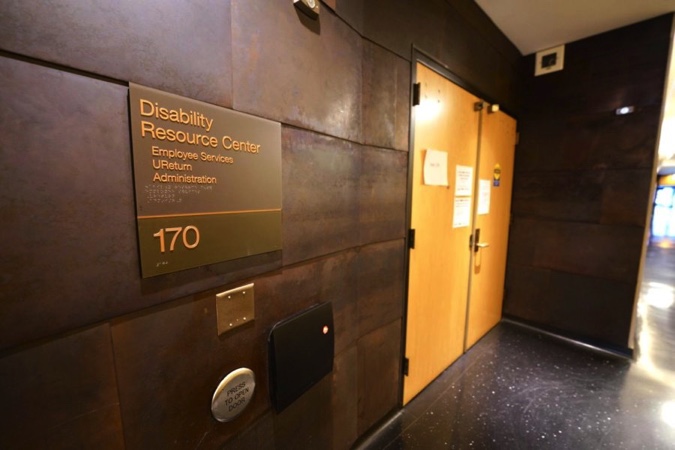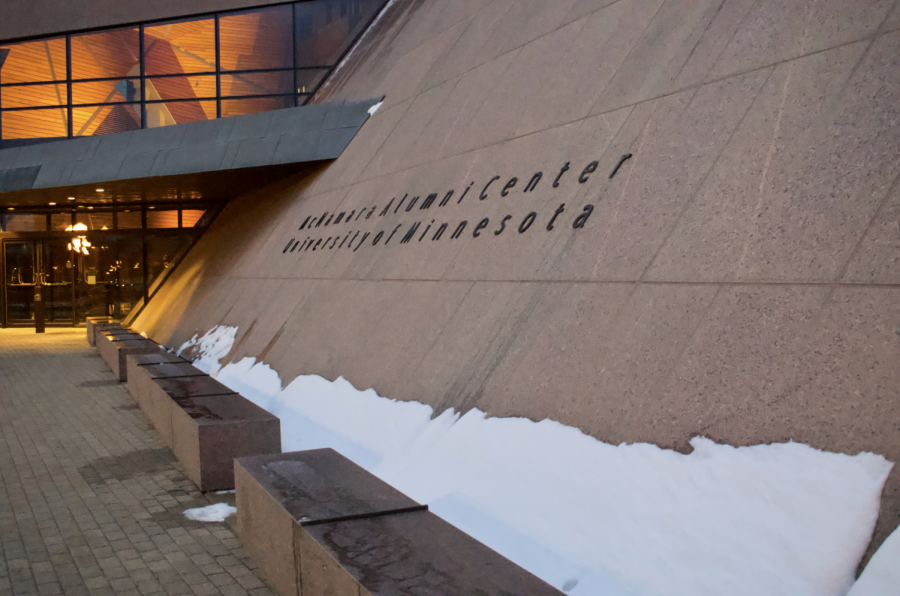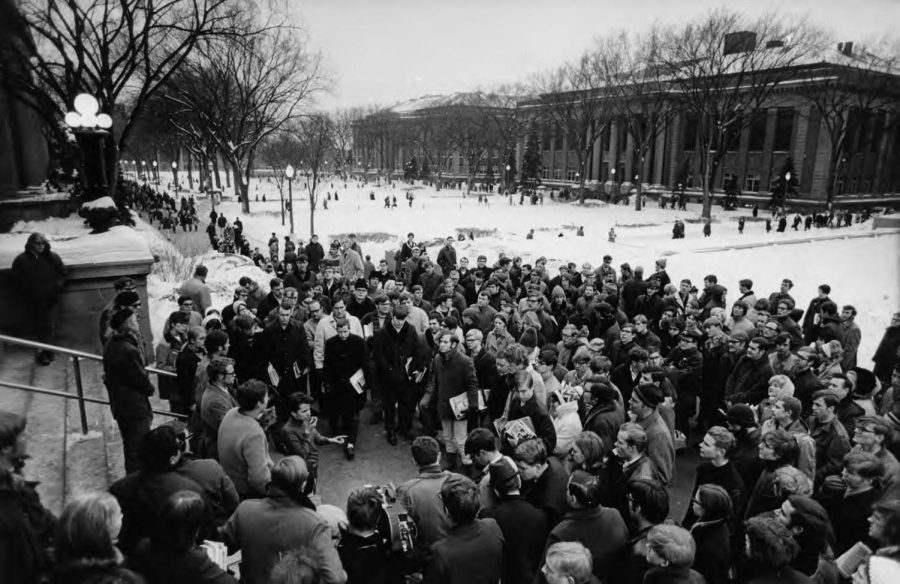Deep below St. Paul’s streets sprawls a web of abandoned utility tunnels, the remnants of a once-great underground service system.
These tunnels, known as the Labyrinth, now lie in semi-abandonment, discarded by their original owners and frequented only by the subterranean prospectors of our time: urban explorers. Just like their Wild West counterparts, the urban exploring community is a territorial, gritty bunch with often conflicting claims to the tunnels and caves that permeate the Twin Cities.
This territorial attitude has kept the 70-mile-long Labyrinth safe from excessive foot-traffic, tourists and police presence. But some explorers have found the very protective streak that guards the tunnels can also exclude the urban exploring, or urbex, community.

Anderson has yet to crack into the Labyrinth, but not for lack of trying. With the aid of vague maps posted on urbex websites and a knack for spelunking, he’s found eight entrances around the city. None so far have panned out.
The Labyrinth’s call
“About three months into exploring, I found out about [the Labyrinth],” Anderson said. “And I was like, ‘this is the holy grail.’”
On July 27, Anderson gave a photographer and me a tour of one of Minneapolis’ slightly less lauded subterranean venues, a sandstone cave. With eight offshoots, this grotto was just a fraction of the Labyrinth’s size.
Before scheduling the visit, Anderson asked us not to name the cave. While not nearly as prized or occult as the Labyrinth, he fears it will be closed if police catch wind it has reopened.
Of course, “reopened” is a loose term, given urban exploring was the main reason the cave was shut down. That, and the “opening” we scrambled down was barely a foot wide. Anderson checked before the expedition that both journalist and photographer could squeeze in; at a relatively lean 5 feet, 7 inches and 5 feet, 11 inches, we scraped through.
As we bumped our way down into the cave, Anderson explained how a friend of his reopened the location a month ago by carving a new hole in the cave’s soft sandstone.
 Though a fellow adventurer tipped Anderson off to this new entrance, he has not been so lucky with other urban explorers, leaving him with few resources to track the Labyrinth.
Though a fellow adventurer tipped Anderson off to this new entrance, he has not been so lucky with other urban explorers, leaving him with few resources to track the Labyrinth.
Dating back to 1865, the Labyrinth’s massive tangle includes telephone, gas and trolley line tunnels. Now mostly abandoned, the Labyrinth is so vast it has been compared to Paris’ Catacombs. But like most well-preserved locations, it remains under lock and key, masked by explorers who want to protect it.
While he understands the importance of preserving the tunnels, Anderson said the territorial attitude has driven him away from the community and the Labyrinth itself.
Exploring against the odds
Pushed out of the community by the very people they seek to network with, many explorers turn to online resources.
“The biggest problem in this community is actually that there’s this elitist level of thinking… We eventually learned there’s a couple people we can talk to, but as far as other groups… most of the time they’re dicks,” said explorer Alex Dittes.
Dittes is one-third of Forgotten World Productions, a New Jersey urban exploring trio he started with partners Josh Jacoby and Patrick Williams.
Like Anderson, the three are disenchanted by the community and hunt for new locations on foot and on the web, rather than with networking.
“It was hard at first, but once you get that sort of explorer mentality … you can find places like that,” Josh explained, snapping his fingers.

Back in the Twin Cities, a more prolific, if slightly less detailed, urbex website known as Action Squad serves a similar purpose to bolster alienated explorers. The website remains popular even though the group has disbanded.
Founded in 1996, Action Squad was a band of curious Twin Cities explorers who documented years of “missions” into the area’s depths.
The Squad released heaps of information on urbex sites in the Cities and, because of their prolific writings, remains a point of contention in the community.
One of their most disputed posts was an intricate map of the Labyrinth in 2001. But details, like street names and entrances, were later stripped from the map, plunging the Labyrinth back into obscurity.
Today, groups like Action Squad and Forgotten World struggle to strike a balance between helping fellow scouts and protecting turf from vandals, arsonists, police and inexperienced scouts who could get injured.
Their fears are not without merit.
In 2009, urban photographer Ian Talty died in tunnels near the Labyrinth. The advent of the 2008 Republican National Convention also upped the security in the Labyrinth, and a maze of functional steam tunnels under the University of Minnesota lost its loyal adventurers to increased security measures like high-definition cameras and alarm systems.
University of Minnesota Police Department Lieutenant Erik Swanson said added security in University tunnels is heartening, but urbex locations off campus still worry officers.
“That’s where the real danger lies,” Swanson said. “Because you don’t know what’s down there.”
Abandoned buildings, caves and sewers — like some parts of the Labyrinth — aren’t built for humans and pose greater threats.
To prevent injuries and deaths, as well as vandalism and information leaks, Forgotten World has a de facto vetting process.

Navigating these initiations can be tricky. Not only do explorers feel responsible to protect their spaces from too many visitors, they also risk bringing the wrath of a community that often feels betrayed.
A pressure for silence
The cave Anderson navigated for us showed every sign of constant visitors. Nearly every wall was covered in tags and crude sketches. In one alcove, small candles littered the ground and Anderson explained that the pockmarked wall, dubbed “Stairway to Heaven”, is a popular spot for candle-lit Instagram photoshoots. A past explorer had tagged “Prom?” on a nearby wall.
But Anderson said it was a YouTube video featuring a common hideout like this one that prompted a fellow explorer to send him death threats. His aggressor believed the video, posted to Anderson’s YouTube channel, Unseen Minnesota, overexposed “his” cave.
“They were saying ‘The next time I see you in my cave, I’ll kill you,’” Anderson said. “It’s happened multiple times.”
Similarly, a University professor who penned a book on the historical and geological aspects of Twin Cities’ underground world, was disparaged by the urbex community for everything from criticizing online urbex resources to revealing cave and tunnel entrances. He declined to comment to avoid further criticism.
Though less hesitant to give insights on the Cities’ depths, Anderson isn’t eager to attract the urbex community’s attention — and vitriol — either.
After squeezing back through the claustrophobic entrance, he turned around to carefully obscure the portal from view, and checked in again to ensure the entrance of the cave won’t be published.
The rest of Anderson’s summer will be consumed by efforts to infiltrate the Labyrinth and to finish his book, “Unseen Minnesota: The Story of an Urban Explorer,” but while he may not come back for quite a while, he wants to keep this cave open for his fellow explorers.
Correction: A previous version of this article misstated the year and where photographer Ian Talty died. He died in 2009 and tunnels nearby the Labyrinth.





















